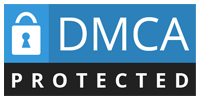The European Accessibility Act (EAA) is a critical piece of legislation aimed at improving accessibility and ensuring that products and services are visible to all users, including those with disabilities, across the European Union, including Ireland.
Effective from 2025, this means ensuring that their offerings meet the new accessibility standards covering the digital environment. Compliance with the EAA enhances inclusivity and opens up new opportunities by catering to a broader audience.
This guide will provide an in-depth look at the EAA’s requirements, helping Irish businesses navigate and implement these essential changes.
A Brief History of EAA
The European Accessibility Act (EAA) is a relatively recent piece of legislation, reflecting the growing recognition of the need to promote accessibility for people with disabilities. It was adopted by the European Parliament and the Council of the European Union on June 7, 2019.
Following the directive, EU member states must incorporate it into their national laws by June 2022 and implement it by July 2025.
The EAA builds upon existing European accessibility standards and legislation, such as the Accessibility Information System Directives (AISD) and the Web Accessibility Directives (WAD). It was introduced to harmonise accessibility requirements for various products and services, promoting inclusivity and removing barriers within the internal market.
These earlier directives focused on areas such as public sector websites and information services. The EAA, however, takes a more comprehensive approach, covering a wide range of digital services, including e-commerce, banking, telecommunications, public transport, and others.
EAA aims to ensure that all EU citizens can fully participate in society and the economy regardless of their abilities. Member states, including Ireland, are required to implement these standards by June 28, 2025. The initiative is expected to majorly impact businesses, public authorities, and individuals across the European Union.
The EAA Compliance Requirements in Ireland
According to a 2023 evaluation, the websites of 73% of the top 100 Irish companies were not accessible to individuals with disabilities. Ireland has adopted the EAA into national law via the European Union (Accessibility Requirements of Products and Services) Regulations 2023. Now, the EAA has been implemented into Irish law, which states that all public and private companies are liable to adapt to changes as of 2025.
Websites and mobile applications must comply with (WCAG) 2.1 Level AA, ensuring that they are perceivable, operable, understandable, and robust for all users. The Web Content Accessibility Guidelines (WCAG) Level AA is the recommended level for online accessibility, and businesses operating in Ireland are required by law to adhere to standards that are likely to be in accordance with it.
A major participant is the UN Convention on the Rights of Persons with Disabilities, which guarantees that individuals with disabilities have the same rights and opportunities as everyone else. Under Ireland’s EAA adoption law, the National Disability Authority is designated as the approved advising body to assist compliance authorities.
Are There Any Exceptions To EAA Compliance in Ireland?
Yes, micro-businesses with less than 10 employees and an annual revenue of €2 million are exempt. EAA does not encourage small businesses to comply with digital products and services. However, increasing reach and providing value to users is a common branding goal that every business should adopt to grow.
In contrast to other countries, the EAA in Ireland simply mandates digital accessibility and does not require actual building adaptations. Although WCAG is not specifically mentioned as the proposed accessibility standard in the legislation, it does make reference to the EN 301 549 standards, which include WCAG along with other criteria.
Furthermore, for ATMs and payment terminals that were in operation before 2025, the EAA permits a grace period; however, this grace period is subject to review and modification.
What is EN 301 549, & What Are Its Requirements?
EN 301 549 is a European standard that outlines the accessibility requirements for Information and Communication Technology (ICT) products and services. It was developed by the European Telecommunication Standards (ETSI) in collaboration with CEN (European Committee for Standardisation) and CENELEC (European Committee for Electrotechnical Standardisation). The standard is designed to ensure that ICT products and services are accessible to all users, including people with disabilities.
The Specific Requirements of EN 301 549
- Functional Performance: It outlines functional performance criteria that products and services must meet to be considered accessible. This includes criteria for vision, hearing, speech, cognition, and physical abilities.
- Technical Specifications: The standard provides technical specifications for designing and developing ICT products and services. This includes requirements for software accessibility, such as text alternatives, adaptable interfaces, and content structure.
- Conformance and Testing: This includes guidelines and validating compliance with accessibility requirements. Organisations must ensure their products and services undergo thorough testing to meet these standards.
What is The Web Accessibility Directive (WAD)?
The WAD, or Web Accessibility Directive (EU) 2016/2102, is a European Union law that aims to make websites and mobile applications more accessible to people with disabilities. Public sector bodies, such as government websites, must meet certain accessibility standards:
Key requirements of the WAD include:
- Accessibility Statement: Public sector websites must have clear and easily accessible statements outlining their accessibility status.
- Feedback mechanism: A mechanism should be in place for users to report accessibility issues and provide feedback.
- Explanation of inaccessible content: If parts of the websites are not accessible, the statement must explain why and what measures are being taken to address these issues.
What Products and Services Are Covered By The EAA?
The EAA (European Accessibility Act) aims to ensure equal access to a wide range of products and services for individuals with disabilities. The EAA covers the following areas:
- E-commerce
- Transportation
- Websites
- Banking services
- Electronic communication
- Audio-visual media services
- E-book
- Ticket and travel check-in machines
- Computers, terminals, and operating systems
- Self-service terminals
- ATMs
- Telephony services
- Smartphones
- Operating systems
- E-reading devices
- Digital television types of equipment
- Air, bus, rail, and water transportation services.
It’s important to note that the EAA applies to a broad range of stakeholders, including manufacturers, importers, service providers, and other economic operators. This ensures that accessibility is integrated into the design and development of products and services from the outset.
Authorities Responsible For Market Surveillance and Compliance
The Regulations make clear who is in charge of making sure that the accessibility standards are followed. Every industry under consideration has been allocated a surveillance authority. The Competition and Consumer Protection Commission (CCPC) overseas market surveillance for products covered by the EAA.
| Industry | Market Surveillance |
| Electronic Communication Services | Commission for Communications Regulations |
| Audio-visual media services | Coimisiún na Meán |
| Air passenger transport services | Irish Aviation Authority |
| Bus, rail, and waterborne passenger transport services | National Transport Authority |
| Consumer banking services | Central Bank of Ireland |
| E-book, dedicated software, and e-commerce | Competition and Consumer Protection Commission (CCPC) |
| Emergency Communications to a single European emergency number, “1122” | Commission for Communications Regulation |
What Are The Enforcement and Penalties For Non-Compliance in The EAA?
The European Accessibility Act (EAA) is a directive that establishes accessibility requirements for various products and services. While the EAA itself does not directly specify penalties for non-compliance, it relies on member states to implement and enforce its provisions.
In Ireland, the National Access Authority (NAA) is the designated compliance authority responsible for monitoring compliance with the EAA and taking enforcement action. The NAA has the power to:
- Direct businesses to comply: The NAA can issue notices or warnings to non-compliant entities, directing them to take steps to comply with the EAA’s requirements.
- Establish complaint procedures: The NAA may establish procedures for individuals to file complaints against organisations that are allegedly in breach of the EAA.
- Seek legal action: in serious cases of non-compliance, the NAA can seek legal action against non-compliant entities.
Penalties For Breaching The EAA’s Requirements in Ireland Can Be Severe, Including
However, there is a potential defence against non-compliance:
- Due diligence: if a defendant can prove that they exercised due diligence in complying with the EAA’s requirements, this may be a defence against legal action.
Irish businesses should proactively work to improve the accessibility of their websites and other digital assets. Doing so can avoid potential penalties and demonstrate their commitment to inclusion.
EAA Compliance: Steps Irish Businesses Should Take
The clock is ticking now, and organisations have very little time to comply with the laws efficiently. With each passing day, you should be prepared to meet your goals before the deadline. Here are some practical approaches to making businesses accessible:
1. Conduct An Accessibility Audit
Businesses must conduct a comprehensive accessibility audit of their websites and digital services. This audit should identify any non-compliance issues with WCAG 2.1, specifically at the A and AA levels.
A combination of automated tools and manual testing is essential to cover the full range of potential accessibility problems. Automated tools can easily scan websites for common accessibility issues, while manual testing allows for a more in-depth analysis of specific elements.
Additionally, businesses should consider the European Telecommunication Standards Institute (ETSI) standard EN 301 549, which provides technical specifications of ICT products and services.
2. Implement Remediation Measures
Once accessibility issues have been identified, businesses must take immediate action to address them. This involves making necessary website or digital service changes to ensure WCAG 2.1 A and AA standards compliance. Key areas to focus on include:
- Text alternatives: To assist users with visual impairments, provide alternative text for non-text content, such as images and videos.
- Captions: Ensure that multimedia content, including videos and audio recordings, has accurate captions to benefit users who are deaf or hard of hearing.
- Contrast ratios: Adjust contrast ratios to make text and other visual elements easily readable for users with low vision.
- Keyboard navigability: Ensure that the websites or digital service can be fully navigated using a keyboard without relying on a mouse or other pointing device.
- Clear and consistent navigation: Use apparent and stable navigation options to help users find the information they need.
The plan should include immediate fixes as well as long-term strategies to help maintain compliance over the long term.
3. Ongoing Monitoring and Maintenance
Businesses must implement a system of ongoing monitoring and maintenance to ensure sustained compliance with the European Accessibility Act (EAA).
This involves regularly reviewing the website or digital service for new accessibility issues, especially after updates or changes to the content. Monitoring tools can be used to automate the process of identifying potential accessibility problems, while periodic human audits can provide a more in-depth analysis.
It’s important to stay proactive and address accessibility issues as they arise to stay compliant with the EAA and provide a positive user experience to individuals with disabilities.
4. Training And Awareness
To ensure effective EAA compliance, it’s essential to invest in training and awareness programs for your staff. This includes developers, designers, and content creators. With this necessary knowledge and skills, you can create an inclusive culture where accessibility is woven into the design and development process from day one. Topics covered in this training should include:
- Understanding accessibility standards: Educating staff on WCAG 2.1 and other relevant guidelines.
- Using accessibility tools: demonstrating how to use assistive technologies and testing tools to identify and address accessibility issues.
- Accessibility best practices: sharing tips and techniques for creating accessible content and designs.
It is possible for businesses to reduce non-compliance risks by investing in training and awareness among their employees.
5. Accessibility Statements
Irish businesses must prioritise transparency and user engagement to demonstrate their commitment to accessibility. One crucial step is to publish a comprehensive accessibility statement on their website.
This statement should outline your organisation’s approach to accessibility, including the standards and guidelines you follow. Additionally, it should provide clear instructions on how users can report accessibility issues and request accessible alternatives. This could involve a dedicated contact form, email address, or phone number.
Identifying and addressing accessibility barriers quickly will be enhanced if users can easily provide feedback. Doing so demonstrates your dedication to inclusivity and fosters a proactive approach to meeting accessibility goals ahead of the EAA deadline.
6. User Feedback Mechanism
Implement a user feedback mechanism to identify and address accessibility issues effectively. This involves implementing a straightforward process for users to repost any accessibility issues they encounter while using your products or services.
This could be a dedicated contact form, email address, or live chat feature on your website. Ensure that feedback channels are easily accessible and clearly visible on your website or platforms. Encourage users to report any accessibility challenges they encounter and ensure there is a clear process for responding to and addressing their feedback.
If you actively seek user feedback, you can gain valuable insights about the accessibility of your websites or digital services and make improvements to meet the needs of people with disabilities.
7. Compliance With National Regulations
While the European Accessibility Act (EAA) provides a framework for accessibility standards, adhering to specific national requirements is essential. In Ireland, this includes complying with the European Union (Accessibility Requirements of Products and Services) Regulations 2023.
These regulations ensure that businesses must meet EU-wide standards and align with local laws and requirements. Staying informed about and abiding by these national regulations demonstrates your commitment to accessibility.
It also helps ensure that your business meets all legal obligations, avoids penalties, and is fully compliant. Businesses that understand and implement both European and national requirements can benefit users with disabilities by creating a more inclusive digital environment.
8. Documentation & Proof of Compliance
Maintaining detailed records of your compliance efforts is crucial to demonstrating your organisation’s commitment to accessibility and avoiding potential legal issues. This includes detailed records of all accessibility audits, remediation actions taken, and ongoing monitoring activities.
Proper documentation helps track progress and serves as essential proof of compliance. It is important to have this documentation readily available to demonstrate your proactive approach to accessibility and due diligence.
If requested by regulatory authorities, you can use these records to demonstrate your compliance with the EAA and any relevant national regulations. Keeping your business organised and diligent protects it from penalties and makes it more inclusive.
9. Avoiding Auto Reliance on Automated Tools
While automated accessibility tools can be valuable for identifying common issues, they have limitations and may not detect all potential problems. To fully meet the European Accessibility Act (EAA) requirements, Irish businesses should avoid over-relying on these tools and incorporate manual intervention into their accessibility audits.
To ensure comprehensive coverage of WCAG compliance, combining automated testing with manual evaluation is essential. Manual testing allows for a more in-depth analysis of specific elements and can identify issues that automated tools may miss, such as ensuring that content is truly understandable and operates for all users.
Using a combination of auto and manual testing, we can better understand business websites or digital services’ accessibility and take the targeted steps to address any deficiencies.
Benefits of Accessibility: More Than Just Compliance
The legal risk of non-compliance with the EAA is undeniable, especially with the recent emphasis on eliminating ineffective accessibility overlay widgets. However, avoiding legal repercussions and brand damage is just the beginning. Accessibility is a strategic investment that offers significant benefits. Prioritising accessibility helps you fulfil your legal obligations, enhance your brand reputation, improve user experience, and expand your market reach. Here are the basics:
1. DEI and Brand Reputation
Prioritising accessibility demonstrates your organisation’s commitment to diversity, equity, and inclusion. This resonates with both employees and customers, enhancing your brand’s reputation and attracting a wider customer base.
2. Enhanced Usability
An accessible website is easier for all users to navigate and engage with, including individuals and disabilities. This improved usability can lead to increased conversions and a better overall user experience.
3. Market Expansion
Make your products and services accessible to tap into new market segments, such as individuals with disabilities and older adults, with significant spending power. These groups represent a large and growing demographic with substantial purchasing power.
4. SEO and Organic Traffic
Adhering to accessibility guidelines can improve your website’s search engine optimisation (SEO), making it more visible in search results and attracting more organic traffic. When you prioritise accessibility, you often make changes that align with SEO best practices. Such as using descriptive heading tags, providing alt text for images, and ensuring clear navigation.
5. Artificial Intelligence Optimisation (AIO)
As AI-driven platforms become more prevalent, WCAG compliance ensures that your content can effectively interact with these technologies. This can enhance your digital marketing efforts and improve your overall experience.
Need A Helping Hand With Accessibility To Meet Compliance?
EAA regulations and a genuine expression of equality are welcome in the new epoch. As Ireland implemented EAA accessibility standards, businesses must prepare to meet the complaint deadline. It is now the most crucial time for websites to review their websites and services to maintain inclusivity.
This will indeed be beneficial, allowing everyone to access the services they need and deserve. Companies should take advantage of the time and resources available to ensure their websites are accessible and compliant with EAA regulations.
Get in touch with Social Web Strategy to audit your site and ensure it meets accessibility standards. As the deadline is around the corner, make your decision now! We perform a thorough audit of your website in accordance with ADA and WCAG standards. As a result, you will receive a detailed report with clear and actionable steps to improve accessibility. We provide ongoing support to ensure your website remains compliant and user-friendly. So, start your audit process today!
Frequently Asked Questions (FAQs)
What is the European Accessibility Act?
Content 1The EAA is a European Union law that sets out accessibility requirements for various products and services, including websites, mobile apps, and public transport. It aims to ensure that individuals with disabilities have equal access to these products and services.
What is a web accessibility statement?
A web accessibility statement is a public declaration by an organisation that commits to making its website accessible to people with disabilities. It outlines the organisation’s efforts to comply with accessibility guidelines, such as WCAG, and provides information on how users can report accessibility issues.
What are the benefits of accessibility for your business?
Implementing accessibility measures can expand the customer base by reaching a wider audience, improving the user experience for all users, enhancing brand reputation and trust, and avoiding potential legal risks and financial penalties.
What happens if my business or organisation doesn’t comply with the laws?
Non-compliance with the EAA in Ireland can result in fines and potential imprisonment. The specific penalties depend on the severity of the non-compliance. Additionally, non-compliance can damage an organisation’s reputation and lead to loss of business.
What are some common accessibility barriers?
Common accessibility barriers include poor contrast ratios, lack of alternative text for images and videos, inconsistent navigation, difficulty using the website or app with a keyboard, and slow loading times.







